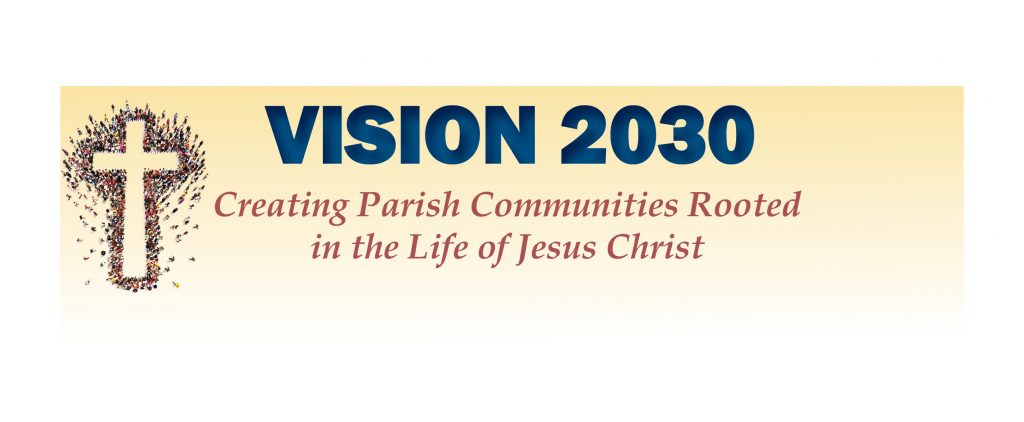
SCRANTON – As we move into 2022, the Vision 2020 Blueprint Process, launched in 2019, will now be known as the Vision 2030 Blueprint Process.
The goal of Vision 2030 remains the same. The long range planning process aims to look proactively at the realities of our local Church in the present moment while striving to meet the opportunities and challenges of the coming decade.
Put simply, Vision 2030 will assist the diocese in creating and sustaining vibrant parishes rooted in the life of Jesus Christ that are able to respond to the needs of as many members of the Christian faithful as possible.
“Our ongoing pastoral planning process in the Diocese is both important and necessary to have vibrant parishes and rich participation in the sacraments,” the Most Reverend Joseph C. Bambera, Bishop of Scranton, has said about the process. “At its very core, (this process) is about putting our relationship with Jesus first in our own lives and in the life of our Church. We must desire to help all people meet Christ and build God’s Kingdom – not our own.”
Bishop Bambera first introduced the pastoral planning process to every parish in the Diocese through a video homily played at all Masses on Dec. 8, 2019. Since that time, a lot of work has taken place. Before the start of the COVID-19 pandemic, the bishop led several regional sessions with parishioners and provided a video presentation to other parishes that were not able to gather in large groups because of the coronavirus.
In 2021, the blueprint process was utilized to help bring together the parish of Sacred Heart of Jesus in Weston with the parish of Saint John Bosco, Conyngham, upon the retirement of the pastor at Sacred Heart of Jesus Parish. Likewise, the blueprint process was also utilized to help Holy Family Parish in Sugar Notch consolidate with Saint Leo the Great Parish in Ashley upon the retirement of the pastor at Holy Family Parish.
The blueprint process has also assisted with parish linkages in the two largest cities of the Diocese of Scranton. Saint John Neumann Parish and Saint Paul of the Cross Parish have been linked in South Scranton under the pastorate of Monsignor Joseph G. Quinn, and Saint Nicholas Parish and Our Lady of Fatima Parish have been linked in Wilkes-Barre under the pastorate of Father Joseph D. Verespy.
In January 2022, the diocese plans to release updated data and information regarding the number of faithful who are supporting the mission of the Church locally as well as information on the decreasing number of priests that will be available in the next decade because of retirements. This information will
provide all the faithful with facts as we best determine how to plan for the future. By the essence of our Baptism, each person is called to take an active role in realizing the mission of the Vision 2030 Blueprint process.
The Diocese of Scranton is not alone in undertaking pastoral planning efforts. Diminishing and aging populations in some sections of the country impacting the number of men pursuing a priestly vocation in the Church, among other factors, have many other Dioceses and Archdioceses undertaking similar measures.
Over the past half century, the number of priests across the U.S. has dropped by about 40 percent — from nearly 60,000 priests in 1970 to 35,513 in 2020, according to the Center for Applied Research in the Apostolate at Georgetown University in Washington, D.C.
